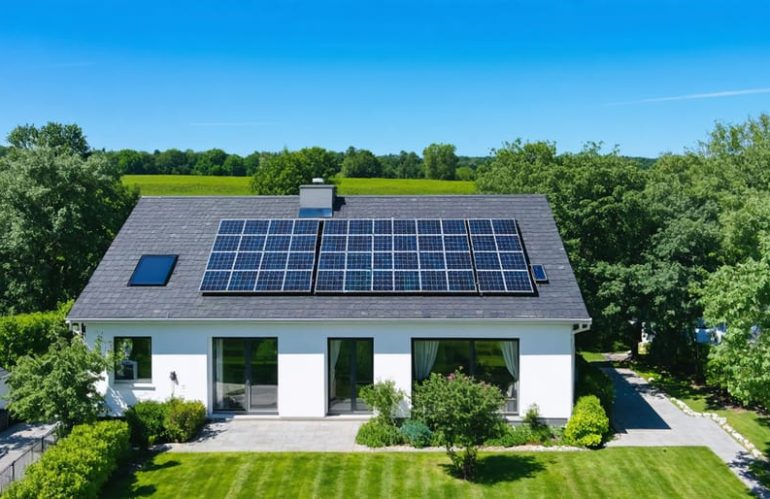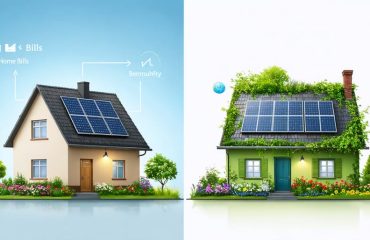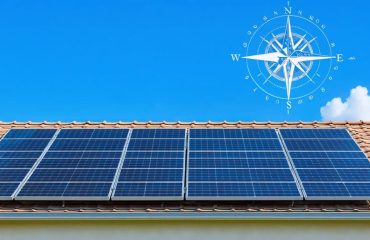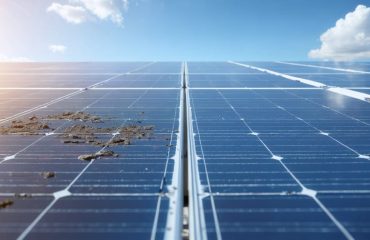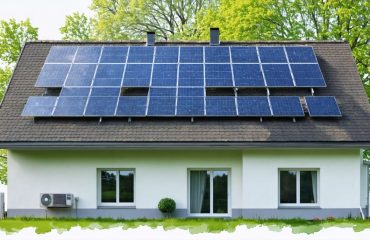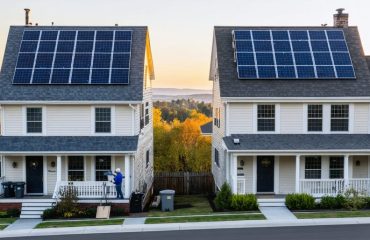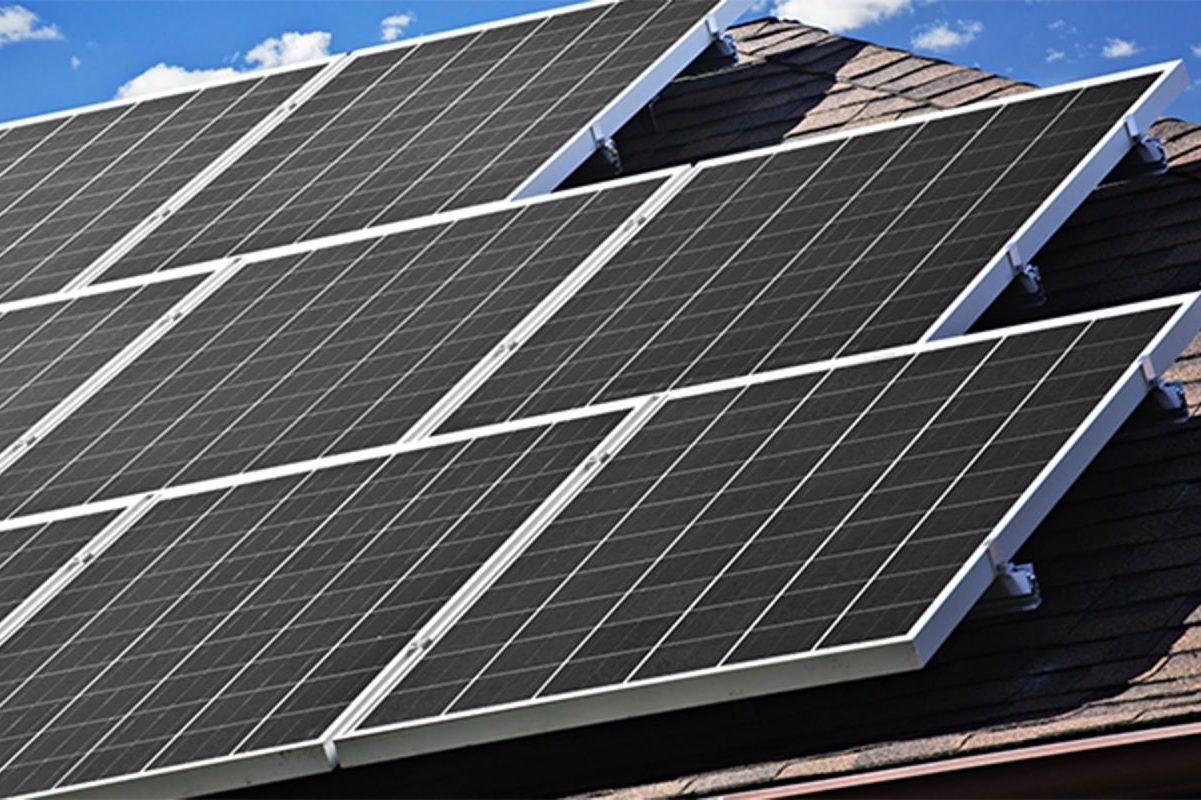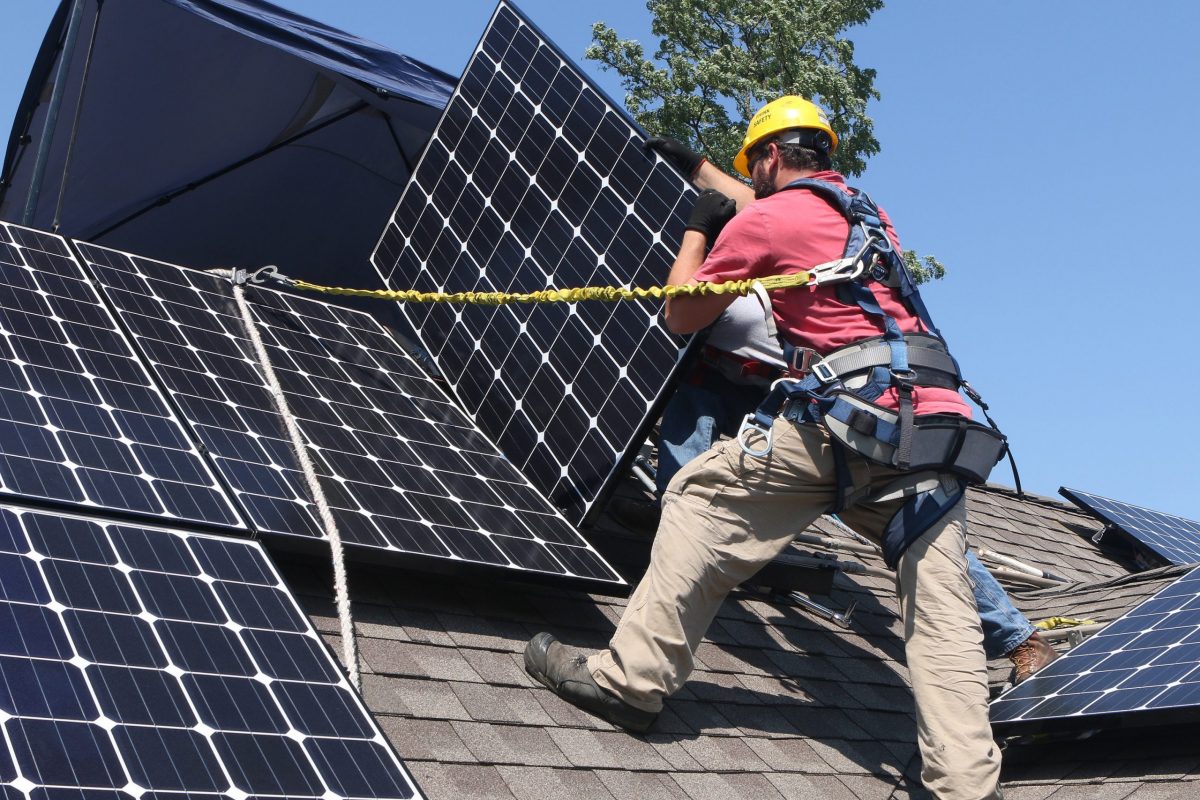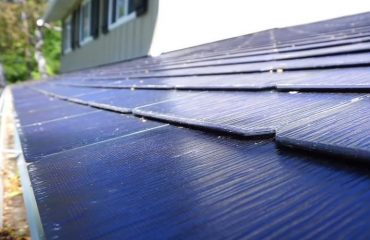A 9kW solar system represents the sweet spot for many American households, typically generating 30-40 kWh of electricity daily and offsetting up to $150 in monthly energy costs. This mid-sized powerhouse strikes an optimal balance between upfront investment and long-term savings, making it particularly suitable for homes with average monthly electricity consumption between 900-1,200 kWh.
For environmentally conscious homeowners seeking energy independence, a 9kW installation delivers impressive results: offsetting approximately 9.1 metric tons of carbon dioxide annually – equivalent to planting 150 trees. The system requires about 550-600 square feet of roof space and typically consists of 24-30 high-efficiency solar panels, depending on the chosen technology and manufacturer specifications.
As solar technology continues advancing while costs decrease, 9kW systems have become increasingly accessible to average homeowners. With federal tax incentives covering 30% of installation costs and many state-specific rebates available, the initial investment of $22,000-$27,000 can often be significantly reduced, making this robust solar solution an attractive option for sustainable living and long-term financial savings.
Is a 9kW Solar System Right for Your Home?
Energy Consumption Patterns
To determine if a 9kW solar system matches your household’s energy needs, start by reviewing your past 12 months of electricity bills. A typical home suitable for a 9kW system usually consumes between 30-40 kWh per day or roughly 900-1,200 kWh monthly. This consumption pattern often corresponds to a larger family home with multiple bedrooms, regular use of air conditioning, and several energy-hungry appliances.
To ensure you choose the right size solar system, consider your daily energy usage patterns. A 9kW system typically generates between 32-40 kWh per day, depending on your location and available sunlight. This output is ideal for households that use most of their electricity during daylight hours or plan to install battery storage.
Look for energy consumption spikes during summer months due to air conditioning or winter months from heating. If your monthly bills consistently show usage within the mentioned range and you have adequate roof space, a 9kW system could be your perfect match.
Space Requirements
A 9kW solar system typically requires between 500 and 600 square feet of unobstructed roof space, depending on the type and efficiency of the solar panels used. For most standard residential panels, you’ll need approximately 24-30 panels to achieve a 9kW capacity, arranged in a suitable configuration to maximize sun exposure.
Before installation, your roof should be evaluated for its structural integrity and orientation. South-facing roofs in the Northern Hemisphere are ideal, though southeast and southwest orientations can also work well. The roof pitch should ideally be between 30-45 degrees for optimal energy production, though other angles can be accommodated with minimal efficiency loss.
Consider factors like shade from nearby trees or buildings, which can significantly impact system performance. Your roof should be relatively new or in good condition, as solar panels typically last 25-30 years. If your roof needs replacement, it’s best to do so before installing the solar system to avoid additional costs later.
Keep in mind that local building codes and homeowners’ association regulations may affect panel placement and installation requirements.
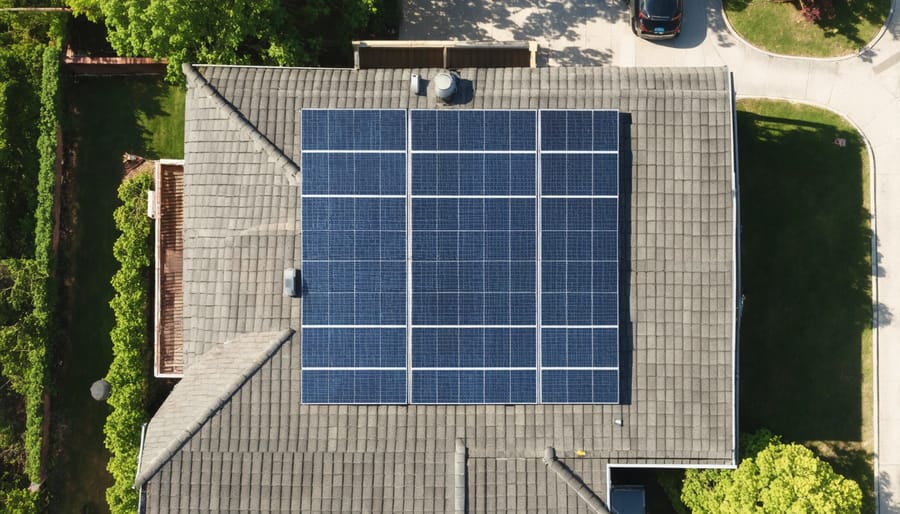
What to Expect from a 9kW Solar Installation
System Components
A typical 9kW solar system consists of several key components working together to generate and deliver clean energy to your home. The foundation of the system includes 24-30 solar panels, depending on their individual wattage ratings (usually between 300-400W each). These panels are typically installed on your roof or ground-mounted arrays, covering approximately 500-600 square feet of space.
At the heart of your installation is the solar inverter system, which converts the DC power generated by your panels into usable AC electricity for your home. Most 9kW systems use either a single string inverter or multiple microinverters attached to individual panels for optimal performance.
The system also includes mounting hardware, which securely attaches the panels to your roof while protecting its integrity. Essential safety equipment such as DC/AC disconnects and surge protection devices are installed to ensure safe operation. A monitoring system lets you track your energy production through a user-friendly app or web interface.
Additional components include electrical wiring, conduit for cable protection, and a meter to measure energy production. Some homeowners also opt to include battery storage systems, allowing them to store excess energy for use during nighttime or power outages.
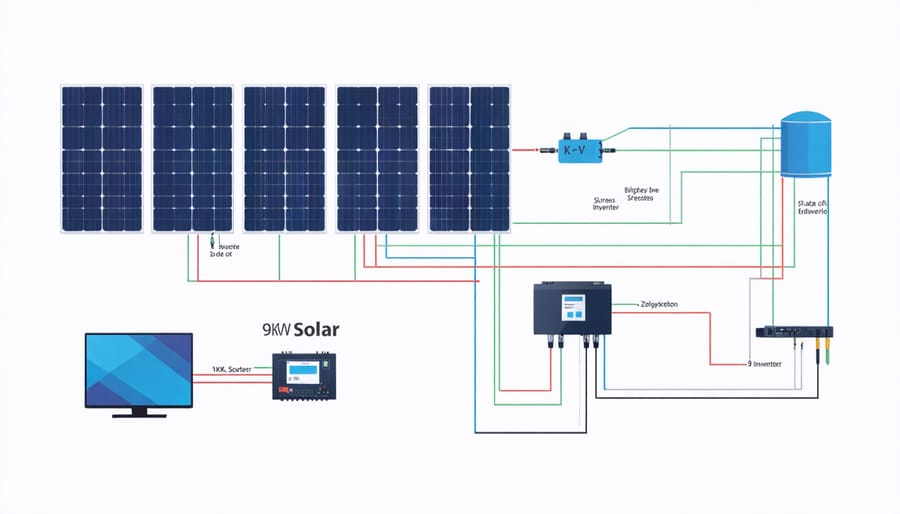
Energy Production Capabilities
A 9kW solar system typically generates between 32 and 40 kilowatt-hours (kWh) of electricity per day, depending on your location and climate conditions. In ideal conditions, this translates to approximately 11,700 to 14,600 kWh annually, making it a robust solution for most medium to large households.
Your actual energy production will vary based on several factors. Southern states with more sunlight, like Arizona or Florida, can expect higher generation rates compared to northern regions. For example, a 9kW system in Phoenix might produce up to 15,000 kWh annually, while the same system in Seattle could generate around 9,000 kWh.
Daily production peaks during summer months when days are longer and sun exposure is maximum. You can expect 4-6 hours of peak production daily, with generation typically starting around 6 AM and continuing until sunset. Even on cloudy days, your system will still produce energy, though at reduced efficiency.
This system size can often offset the entire electricity consumption of a household using 900-1,000 kWh monthly. Many homeowners even generate excess power during peak production months, which can be fed back into the grid for credits or stored in a battery system for later use.
To maximize your system’s output, proper installation angle, regular maintenance, and strategic panel placement are essential. Professional installers will help determine the optimal setup for your specific location and roof configuration.
Cost and Financial Benefits
Installation Costs
A 9kW solar system typically costs between $18,000 and $27,000 before incentives, with the national average hovering around $23,400. This investment includes solar panels, inverters, mounting hardware, and professional installation. The final price can vary based on your location, roof configuration, and equipment quality.
The good news is that several incentives can significantly reduce your out-of-pocket expenses. The federal solar tax credit allows you to deduct 30% of your total system cost from your federal taxes. For a $23,400 system, this translates to approximately $7,020 in savings, bringing your net cost down to $16,380.
Many states offer additional incentives, including:
– State tax credits
– Solar renewable energy certificates (SRECs)
– Performance-based incentives
– Local utility rebates
Labor costs typically account for 20-30% of the total installation price, while equipment makes up the remainder. Premium panels and microinverters may increase initial costs but often provide better long-term performance and reliability.
It’s worth noting that financing options like solar loans, leases, and power purchase agreements (PPAs) can help make the initial investment more manageable. Most homeowners see a return on investment within 5-8 years, depending on local electricity rates and solar production.
Long-term Savings
A 9kW solar system represents a significant opportunity for long-term financial savings. Homeowners typically see a 70-90% reduction in their monthly electricity bills, depending on their location and energy consumption patterns. The substantial savings potential makes these systems an attractive option for those seeking reliable solar power investment returns.
Most homeowners can expect to recoup their initial investment within 5-7 years through reduced energy bills and available tax incentives. After this period, the system essentially provides free electricity for the remainder of its 25-30 year lifespan. With average annual savings between $1,500 and $2,400, a 9kW system can generate total savings of $37,500 to $60,000 over its lifetime.
The financial benefits extend beyond direct energy savings. Many states offer net metering programs, allowing homeowners to sell excess power back to the grid, creating an additional income stream. Property values typically increase by 4-6% with solar installation, adding another layer of financial advantage.
When factoring in rising utility rates, which historically increase by 2-3% annually, the long-term savings become even more substantial. The fixed cost of solar provides protection against these inevitable rate hikes, making it an excellent hedge against future energy cost increases.
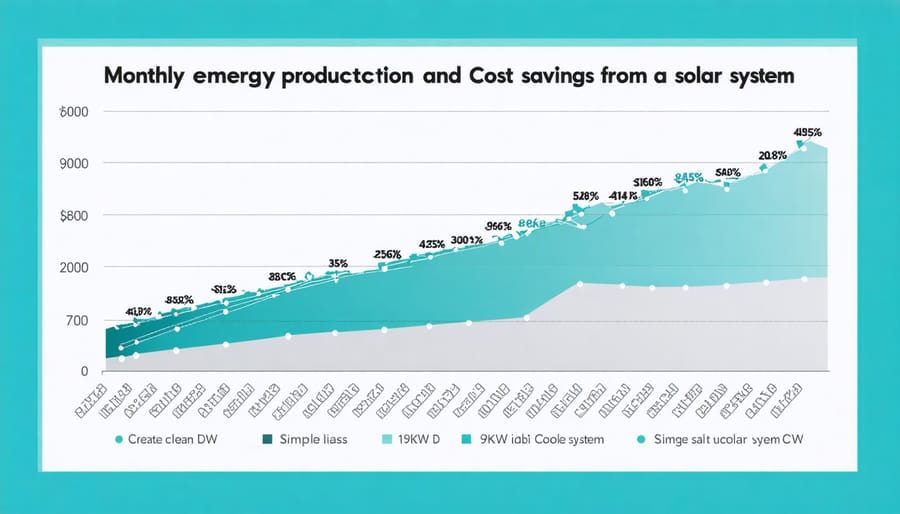
Maintenance and Longevity
Regular Maintenance Requirements
To keep your 9kW solar system performing at its best, regular solar panel maintenance is essential but surprisingly simple. Schedule a visual inspection every three months to check for debris, dirt, or leaves that might block sunlight. Clean the panels with water and a soft brush twice a year, preferably during early morning or evening to avoid working with hot surfaces. Monitor your system’s performance through its inverter display or mobile app to catch any unexpected drops in energy production.
Trim any overhanging branches that could shade the panels or drop debris. Check the mounting hardware annually to ensure everything remains secure, especially after severe weather events. Have a qualified technician perform a comprehensive inspection yearly to test electrical connections, inspect wiring, and verify inverter performance.
Keep detailed records of your system’s energy production and maintenance activities. This documentation helps identify potential issues early and maintains warranty coverage. Remember, a well-maintained 9kW system can operate efficiently for 25+ years, making these simple maintenance tasks a worthwhile investment in your system’s longevity.
System Lifespan and Warranty
A 9kW solar system is built to last, with most high-quality panels carrying a 25-30 year performance warranty. During this period, manufacturers typically guarantee that the panels will maintain at least 80% of their original power output capacity. The inverter, another crucial component, usually comes with a 10-12 year warranty, though premium models may offer coverage for up to 25 years.
With proper maintenance and installation, your solar system can actually perform efficiently for 30-35 years or more. The panels themselves have no moving parts, making them incredibly durable and resistant to wear and tear. They’re designed to withstand various weather conditions, including heavy rain, wind, and hail.
Most reputable installers also provide workmanship warranties covering the installation quality for 5-10 years. It’s worth noting that while warranties provide important protection, the actual lifespan of your system often exceeds the warranty period. Regular maintenance, such as occasional cleaning and annual inspections, can help maximize your system’s longevity and maintain optimal performance throughout its lifetime.
A 9kW solar system represents an excellent investment for many homeowners seeking to embrace renewable energy and reduce their carbon footprint while saving on electricity costs. Throughout this guide, we’ve explored the system’s capabilities, costs, and benefits, making it clear why this size is particularly popular for medium to large households.
Remember that a 9kW system typically generates between 32-40 kWh per day, depending on your location and installation conditions. This output can significantly reduce or eliminate your electricity bills while providing a reliable return on investment through solar incentives and reduced energy costs.
Before moving forward with your solar journey, consider these essential next steps:
1. Get multiple quotes from reputable solar installers
2. Have your roof assessed for structural integrity and optimal panel placement
3. Review your current energy consumption patterns
4. Check local regulations and HOA requirements
5. Investigate available solar incentives in your area
The transition to solar energy is a significant decision, but with proper planning and professional guidance, it can be a smooth and rewarding process. Whether your motivation is environmental consciousness, energy independence, or financial savings, a 9kW solar system could be the perfect solution for your home’s energy needs.
Take the first step today by requesting quotes from certified installers and begin your journey toward a more sustainable and cost-effective energy future.

